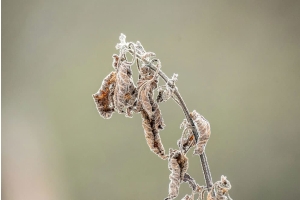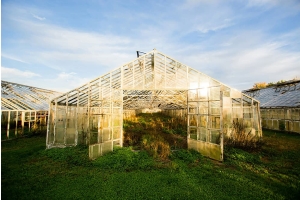Plant Dormancy: What Happens to Them in Winter and How to Care for Them

As the days shorten and temperatures drop, many plants begin to slow down, entering a state known as dormancy.
Far from being a sign of decline, dormancy is a natural part of a plant's lifecycle, allowing it to survive harsh winter conditions and return stronger and just as vibrant in spring.
Whether you manage a commercial plant nursery, a landscaped garden, or a small collection of potted plants, understanding what happens during this period and how to care for dormant plants is essential to maintaining long-term plant health.
In this guide, we'll explore what dormancy means, which plants are affected, and how to care for your garden through the colder months to ensure a strong start to the new growing season.
What Is Plant Dormancy?
Plant dormancy is a resting phase where growth temporarily stops or slows dramatically. During this period, your plants conserve energy, reduce water usage, and protect themselves from frost and low-light conditions that would ordinarily affect their health.
Most perennial plants, trees, and shrubs enter dormancy in late autumn as part of their natural seasonal cycle, a phase we're accustomed to seeing, signalled by the yellowing and falling of leaves. Annual plants, by contrast, complete their life cycle in one season and won't return the following year unless reseeded.
Why Do Plants Go Dormant?
Dormancy is triggered by a combination of environmental cues:
- Shorter daylight hours signal reduced photosynthetic activity.
- Lower temperatures slow metabolic processes.
- Moisture reduction helps prevent damage to roots and stems during freezing temperatures.
In simple terms, during dormancy, plants put things on hold to survive winter, a protective measure that ensures resources are conserved until the return of favourable growing conditions.
Signs Your Plants Are Dormant
It's easy to mistake dormancy for disease or decline. Understanding the signs will help you distinguish between them and avoid uprooting healthy flowers, shrubs, and trees!
Common signs of dormancy include:
- Leaf yellowing or complete leaf drop.
- Stems appear dry or woody.
- Slowed or halted growth.
- Reduced watering requirements.
- Bare branches on deciduous trees and shrubs.
Pro Tip: Check for life by gently scratching the bark of woody plants. Green tissue underneath means the plant is healthy and simply resting.
Types of Plant Dormancy
Different plant types handle dormancy in unique ways. Knowing these differences helps you tailor your care approach.
1. Deciduous Plants
These plants lose their leaves to minimise moisture loss and energy use. Common examples include fruit trees, roses, and ornamental shrubs.
- How to Care for Deciduous Plants During Winter: Prune dead or damaged branches, remove fallen leaves to reduce the risk of fungal infections, and apply mulch to insulate the roots and protect them from extreme temperatures.
2. Evergreen Plants
Evergreens remain green all year, but they still experience slowed growth during winter.
- How to Care for Evergreen Plants During Winter: Water your plants occasionally during dry spells to prevent root dehydration and protect their foliage from strong winter winds.
3. Perennial Flowers and Bulbs
Perennials retreat underground, conserving energy in their roots, tubers, or bulbs.
- How to Care for Perennial Plants During Winter: Cut back dead foliage using the appropriate hand tools once frost has blackened it, and cover with a layer of mulch or straw to protect against freezing temperatures.
4. Potted Plants
Potted plants are particularly vulnerable to cold damage because their roots are above ground.
- How to Care for Potted Plants During Winter: Move garden pots and planters closer to walls, group them for warmth, or wrap containers with frost protection fleece or insulation film to prevent frost damage.
How to Care for Dormant Plants During Winter
Winter care is all about protection, observation, and preparation for spring. Here's how to help your plants through their dormant phase:
1. Adjust Your Watering Routine
Overwatering is one of the most common winter mistakes. Dormant plants require less moisture as their roots absorb fewer nutrients.
- Check the soil before watering; it should be slightly dry, not saturated.
- For container plants, ensure pots have adequate drainage to avoid root rot.
2. Mulch and Protect Roots
Mulching provides an insulating layer that protects roots from frost and temperature fluctuations.
- Apply straw, composted leaf mulch, or aggregates such as bark around the base of your plants.
- Keep mulch away from stems to prevent rot.
3. Prune and Clean Up
Pruning during dormancy helps shape plants and encourages strong spring growth.
- Remove dead, diseased, or crossing branches.
- Clean and disinfect pruning tools between uses to prevent the spread of fungal spores.
Protect Against Frost and Wind
Cold, drying winds can dry leaves and buds.
- Use garden fleece and cloche film for sensitive species.
- For larger shrubs or small trees, consider windbreak netting to reduce exposure.
5. Monitor for Pests and Disease
Even during dormancy, pests can overwinter in soil or crevices in bark.
- Regularly inspect plants for eggs, larvae, or fungal growth, and apply pest control or fungicides as necessary.
- Remove debris from around plant bases to discourage overwintering insects.
Pro Tip: A dormant period doesn't mean inactivity; it's your best time to prepare soil, clean tools, and plan next year's layout for a head start in spring.
What to Do When Dormancy Ends
As daylight increases and temperatures rise, most plants gradually "wake up." You'll notice new shoots, swelling buds, and greener foliage.
You should avoid feeding too early. Introducing fertiliser before growth resumes can stress roots. Instead, begin light feeding only once you see active new growth.
A gradual reintroduction to regular watering, sunlight, and nutrients helps plants transition smoothly into their next growth phase.
Dormancy may look like a time of rest, but for professional growers and dedicated gardeners, it's a crucial opportunity to prepare for future growing success.
By protecting, pruning, and monitoring your plants throughout winter, you’ll set the stage for strong, healthy growth come spring. Thankfully, at LBS Horticulture, we stock everything you need to care for your plants year-round, from bark and frost protection fleece to professional-grade growing media, greenhouse supplies, and heating and lighting equipment.
Discover our comprehensive range today and enjoy free UK delivery on orders over £195 (plus VAT). We're here to help you keep your garden thriving through every season.





